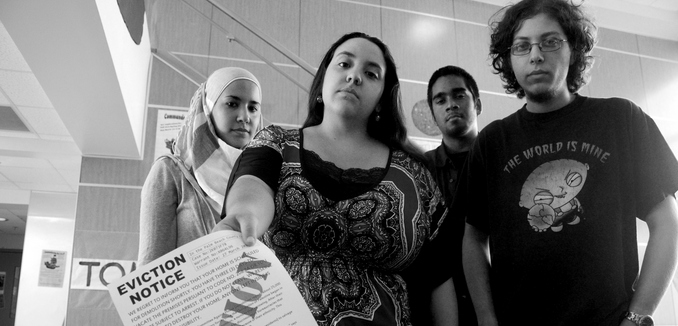In On Many Campuses, Hate is Spelled is SJP, which was published in the October 2014 issue of The Tower Magazine, Daniel Mael traces the history of the campus group Students for Justice in Palestine (SJP), and shows how neither justice nor peace are its goals. SJP is an outgrowth of an Egyptian organization called the General Union of Palestinian Students that was eventually transplanted to San Francisco. During the second intifada in 2001, a graduate student at the University of California, Berkeley named Hatem Bazian, now a professor there, “launched his own chapter of GUPS” and “renamed the group, and refashioned it in his own image.”
Mael writes that Bazian was reported to have cited a religious call to destroy the Jews and compared Israel to Nazi Germany. And Bazian is not alone in propagating such violent and extremist speech. Mael observes that many of SJP’s speakers “are open advocates for terrorism and reject any vision of a peaceful Middle East that includes the Jewish State.” But SJP’s violence isn’t relegated to mere rhetoric.
In the face of such a torrent of incitement, should it be surprising to see members of SJP engaging in actual physical aggression and violence against Jewish or pro-Israel students? On March 5, 2010, Husam Zakharia, the president of the UC Berkeley chapter of SJP, rammed pro-Israel student Jessica Felber with a shopping cart. Felber was holding a sign reading “Israel Wants Peace.” He was arrested; but in a 2012 decision dismissing her lawsuit a judge ruled that the SJP leader’s actions constituted “free speech.” Precisely how physically attacking another human being constitutes protected speech was left up to others to decide.
In August 2014, Temple University student Daniel Vessal, who is Jewish, was hit in the face by someone who was with a group of students, many of whom were confirmed as SJP members. Two witnesses heard members of SJP call him a “kike” after the attack. “Before this I just thought Students for Justice in Palestine was crazy,” Vessal told me soon after the incident, “but I didn’t know it would lead to violence.” SJP at Temple scrambled to downplay the incident, but nonetheless felt the need to issue a condemnation, albeit a backhanded one. They condemned the attack “just as we condemn the violence that is committed against Palestinians by the state of Israel on a daily basis.” Indeed.
After showing that verbal and physical assaults are part of SJP’s agenda, Mael warns that “unless college administrators take a more active role in preventing it, SJP has a good chance of achieving its goal of turning venomous hatred of Israel and bullying of Jews and non-Jewish supporters—with all the violence and fear that inevitably accompany it—into a legitimate and accepted tactic on North American campuses.”
This phenomenon was documented by Tessa Nath, a student at UCLA who wrote Why Are Student Leaders and Jewish Bruins Under Attack at UCLA?, which was published in the June 2014 issue of The Tower Magazine. Nath wrote that at one student council meeting debating whether to boycott Israel, “I watched with a sense of helplessness as blocks of students went up to the microphone to gush hate, bias, and one-sided claims from all sides of the divestment advocacy spectrum.” Earlier this month, the University of California issued a directive (.pdf) prohibiting the advocacy of the BDS movement inside the classrooms of its campuses.
[Photo: University Press / flickr ]




